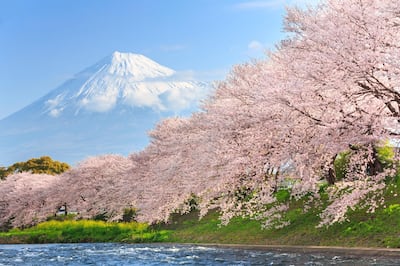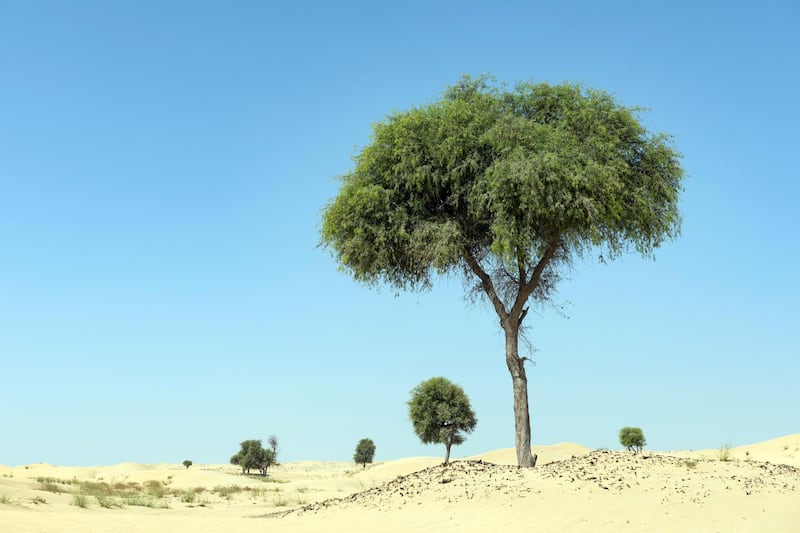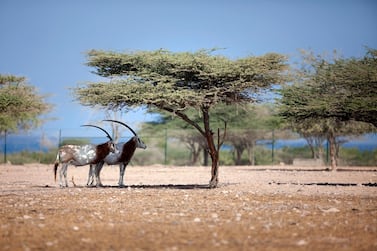How often do we pass by trees and recognise them for the stories they hold? Many of them form a distinctive layer of wood around their trunk for every year they age. These rings tell us about the temperature, rainfall, seasons and other information from that year. In essence, trees preserve the past.
They also allow us to record our ideas. We etch our marks on their barks and use their sheets to mark down our stories. Lebanese-American poet Kahlil Gibran once wrote: “Trees are poems the earth writes upon the sky, we fell them down and turn them into paper, that we may record our emptiness.”
They have inspired writers, philosophers, artists and scientists for much of human history. In his poem Birches, American poet Robert Frost wrote how climbing and swinging from the white-barked birch tree gave him an opportunity to briefly escape from the realities of the world and to achieve freedom of imagination. Isaac Newton's formulation of the law of universal gravitation was reputedly inspired by an apple tree in his family home in Lincolnshire, England. According to Newton's biographer William Stukeley, an apple fell from the tree, prompting Newton to ask why apples always fall straight down to the ground. This observation led him to publish the famous theory in 1687.
The Buddha is believed to have reached enlightenment while sitting under the shade of the heart-shaped bodhi tree in the northern Indian state of Bihar. According to Buddhist texts, he spent a week after his enlightenment gazing at the tree in gratitude. The Mahabodhi Temple in Bodh Gaya, which features the sacred tree, is a Unesco world heritage site and among the main pilgrimage sites for Buddhists.
Trees also allow us to live in the present – an important factor to staying healthy and happy. Growing research suggests that spending mindful time amidst trees has the power to reduce blood pressure, counter stress and anxiety, and boost the immune system. In Japan, the practice of Shinrin-yoku meaning “forest bathing” or “taking in the forest atmosphere", involves immersing oneself around trees and connecting with nature through sight, sound, and smell to promote well-being. The term was coined in 1982 by Japan's Ministry of Agriculture, Forestry and Fisheries to encourage people to spend time in nature. Many of today’s medicines come from trees. Aspirin was originally extracted from the willow bark, while Paclitaxel – or Taxol – which is a medication being used to treat many different cancers, is derived from the Pacific yew tree.
Trees tell the story of countries’ national culture and heritage. Brazil was named after its national tree, the Pau Brasil. It played a vital role in the country’s economic development following Portuguese settlement in 1500 because of the highly-demanded red dye harvested from its trunk and exported to Europe. The maple tree distinctively echoes “Canadian” with the red maple leaf featured at the centre of Canada's national flag.
Some countries have dedicated a specific time to celebrate trees. Australia holds its largest community tree-planting event in late July, while the United Kingdom hosts an annual National Tree Week in late November to launch the start of the winter planting season. At a global level, the United Nations announced March 21 to be International Day of Forests to highlight the importance of all types of trees.
In the UAE, the ghaf, which goes by its scientific name prosopis cineraria but is also known as shami or khejri, was declared as the national tree in 2008 – due to its cultural, historical, and environmental significance. The ghaf tree tolerates harsh conditions and makes them hospitable for those around it. There is a saying that goes thus: “Death will not visit a man, even at the time of a famine, if he has a ghaf, a goat and a camel, since the three together will sustain a man even under the most trying conditions."
The branches, bark, leaves, flowers, and roots of the ghaf all provided rich resources and habitat for the UAE’s wildlife and inhabitants, making it an integral part of the food chain. Many birds such as the desert eagle owl, yellow-throated sparrow and brown-necked raven build their nests on its branches. Desert livestock fed largely on its nutritious leaves. During famines, its pods provided nourishment, and its bark was grounded into flour to make cakes. Its slightly bitter leaves continue to be finely chopped in salads and crumbled over salted fish and rice. It provided shade and shelter in the summer’s swelter. Its reddish-brown wood provided material for building houses, furniture, and livestock barns, while also serving as excellent firewood.

The ghaf is also used in traditional medicines to treat rheumatism, asthma, bronchitis and bites from scorpions and snakes. The tree provides environmental benefits, exhaling oxygen to reduce carbon emissions, stabilising sand dunes, improving soil fertility and boosting the growth of crop plants under its shade. With all the benefits it provides, the ghaf remains durable, living in harsh conditions and surviving scorching heat. It can withstand drought as its roots can delve more than 30 metres below the earth to reach water ordinary plants cannot tap into. Some species of the ghaf tree can live for more than 200 years.
The shade of the ghaf tree also served as a meeting point for community gatherings. Under its branches, the UAE’s tribal leaders held important meetings and listened to and consulted with their citizens.
The ghaf tree's stability, adaptability, and co-existence in a diverse ecosystem make it a paradigm of tolerance. It comes to no surprise then that it was chosen as the logo of the Year of Tolerance. The UAE is a multicultural society with more than 200 nationalities growing in harmonious co-existence. Just as a ghaf tree stands resolute and tall while serving diverse desert ecosystems, so too the UAE hosts diversity while preserving its deeply rooted tradition and customs.
That is the ghaf’s story and, in turn, it is ours.
Fatima Al Fahim is a writer and Oxford University graduate in public policy






